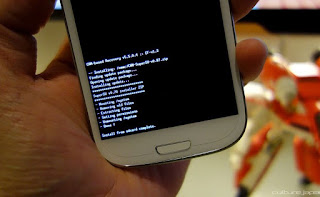Introduction
For those new to the world of rooting, acquiring root access essentially grants you elevated permissions. With root access, you are able to access and modify files that would normally be inaccessible, such as files stored on the /data and /system partitions. Having root access also allows you to run an entirely different class of third-party applications and apply deep, system-level modifications. And by proxy, you may also be able to access certain device features that would otherwise be inaccessible or use existing features in new ways. Having root access isn’t the end all-be all of device modification–that title is usually reserved for fully unlocked bootloaders and S-Off. That said, root access is generally the first step on your journey to device modification. As such, root access is often used to install custom recoveries, which then can be used to flash custom ROMs, kernels, and other device modifications. Root access also enables users to install the powerful and versatile Xposed Framework, which itself acts as a gateway to easy, non-destructive device modification. Due to its inherent power, having root access is often dangerous. Thankfully, there are root brokering applications such as SuperSU that only grant root access to applications of your choosing. There are also various root-enabled utilities available to help you restore in the event that something goes wrong. For starters, you can use any number of root-enabled application backup tools to backup your applications and their data to your local storage, your PC, and even online cloud storage. And in conjunction with a custom recovery, rooted users are able to perform a full, system-wide Nandroid backup that essentially takes a snapshot of your current smartphone or tablet at any particular time. We can go on about the virtues of root access ad infinitum, but we’ll stop for now because we sense you salivating at the prospect of root access and what you can do with your device once root is achieved. Framaroot Many devices can be rooted using this application. Check your device for compatibility.Towelroot
Created by XDA Recognized Developer geohot, Towelroot is another root exploit app that is compatible with a large range of devices. The root exploit itself is built around Linux kernel CVE-2014-3153 discovered by hacker Pinkie Pie, and it involves an issue in the Futex subsystem that in turn allows for privilege escalation. Although specifically designed for certain variants of the Galaxy S5, it is compatible with the majority of devices running unpatched kernels.
CF-Auto-Root
Created by XDA Senior Recognized Developer Chainfire, CF-Auto-Root is a root for “rooting beginners” and those who want to keep as close to stock as possible. CF-Root is meant to be used in combination with stock Samsung firmwares as well as Nexus devices, and be the quickest and easiest way for your first root. In essence, it does nothing but install and enable SuperSU on your system, so apps can gain root access.
KingRoot
KingRoot is root for people who just want to have root access to their devices, and not necessarily wanting to flash anything extra. It works on almost all devices from Android version 2.x to 5.0. Working of KingRoot is based on system exploit. The most suitable root strategy will be deployed from cloud to your device according to the ROM information on the device. The best part of using this root method is that it does not trip KNOX and have the ability to close Sony_RIC perfectly.
Normal root
Its the simplest of all in this method you just have to first download the file from chainfire and then use the CWM recovery to unzip the file which will automatically install on your device.
Let's Start
Check your device model ! Settings -> About device -> Model number. See the third post for exact supported model numbers. If your device is a totally different model, it will not work (may even brick) ! CF-Root is the root for "rooting beginners" and thoseInstallation
Firstly Install the CF-Autoroot file(Link is given below) in your memory card or phone memory,download the odin(Link is given below).
Flash the CF-Auto-Root package as AP in ODIN, and your device should reboot into a modified recovery (signified by a large red Android logo)


and it will install SuperSU for you and restore the stock recovery, and reboot back into Android.Make sure that your device should be connected to the computer the whole time until the installation complete. If you don't get to the red Android logo, boot into recovery manually ("adb reboot recovery", or boot while holding Power+VolUp+Home). Using this root increases your flash counter and trips the KNOX warranty flag! Did you see the red Android logo during rooting, but SuperSU does not appear? This may sometimes occur due to left-over files and settings, however, you can usually install SuperSU from Google Play at this stage and it'll just work.
The icon will look like this!
